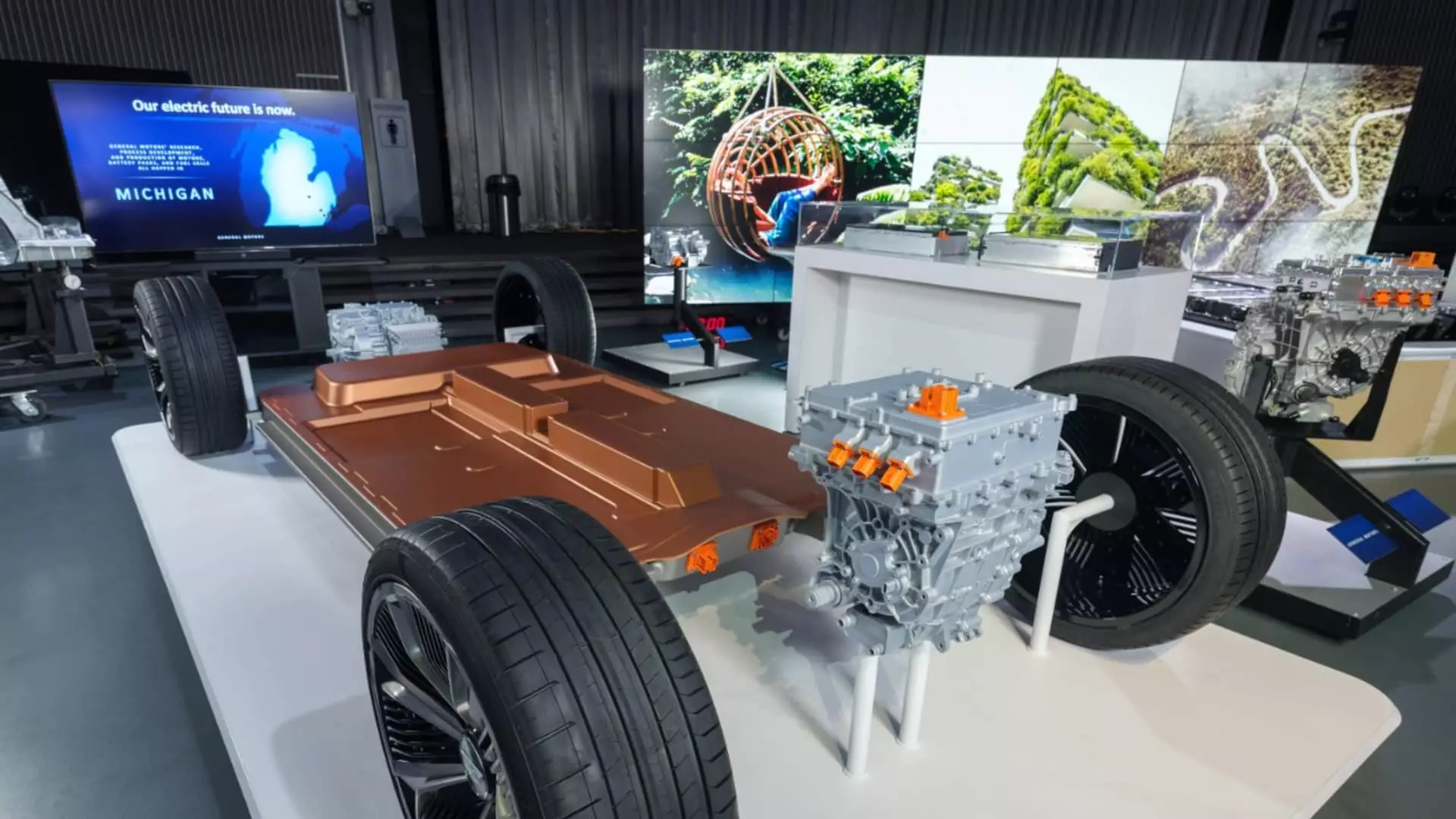General Motors (GM) has recently made a pivotal announcement regarding its position in the rapidly evolving electric vehicle (EV) battery market. The automotive giant intends to sell its stake in a Michigan-based battery cell plant to its joint venture partner, LG Energy Solution (LGES), in a significant move that is indicative of both GM’s strategic realignment and the current dynamics within the EV sector. Valued at approximately $2.6 billion, the transaction aims to recover GM’s investment, with estimates suggesting reimbursement around $1 billion. This decision has considerable implications not only for GM and LGES but also for the broader automotive landscape as manufacturers adapt to shifting consumer demands and regulatory environments.
The Lansing facility, which spans an impressive 2.8 million square feet, is currently near completion, poised to become the third production site for the joint venture, Ultium Cells LLC, following established plants in Ohio and Tennessee. Initially announced in January 2022, this plant has been a part of GM’s broader strategy to establish a robust battery manufacturing footprint. However, the announcement of the stake sale brings to light the challenges GM faces concerning EV production levels and unexpectedly low consumer uptake. The timing of this divestment raises questions regarding GM’s future prospects and strategies in a rapidly changing market characterized by technological advancements and fluctuating consumer interest.
Critics might argue that this sale reflects an urgent response to potential miscalculations in demand forecasting by GM. The company is grappling not only with its production alignment but also navigating a climate of uncertainty regarding federal incentives aimed at supporting the EV industry. The upcoming changes in U.S. policy under President-elect Donald Trump further complicate the landscape, leading GM to make what could be seen as a defensive move. Nevertheless, it is essential to note that the transaction does not affect GM’s overall stakes in the collaborative venture with LGES, nor does it impede plans for a separate partnership involving LGES’s competitor, Samsung SDI.
GM’s Chief Financial Officer, Paul Jacobson, echoed a sentiment of optimism despite the decision to sell, stating that the change will enable both companies to leverage efficiency and market capacity. LGES will now have direct access to the Lansing facility to expedite equipment installation, ensuring that production can commence shortly as the plant is projected to open by year-end. The operational strategy seems focused on streamlining manufacturing processes while maximizing output in alignment with real market demand. Critical to this approach is the partnership’s previously established relationship, which fosters flexibility amid evolving technological demands.
In addition to the sale of its stake, GM announced an extension to its 14-year partnership with LGES aimed at designing new prismatic battery cells. Unlike traditional pouch cells, prismatic cells offer distinct advantages in terms of size optimization and weight reduction, crucial for enhancing EV efficiency and driving down costs. By investing in the development of such innovative battery technologies, GM is not only working to improve vehicle performance but also to bolster its competitive edge within an increasingly crowded marketplace. Kurt Kelty, GM’s vice president of battery cell and pack, underscored the importance of pursuing the right chemistries and designs to facilitate improved product outcomes.
GM’s decision to divest from its stake in the Michigan battery plant illustrates a calculated strategic shift influenced by current economic conditions and consumer sentiment toward electric vehicles. As the automotive industry continues to transition towards electrification, GM’s actions spotlight the necessity for adaptive strategies in a landscape that demands innovation and efficiency. By leveraging partnerships and focusing on next-generation battery technologies, GM aims to remain at the forefront of the EV revolution, navigating forthcoming challenges with resilience and a forward-thinking approach. The future will reveal whether this decision serves as a stepping stone or a stumbling block for GM in its quest to lead the electric vehicle market.

